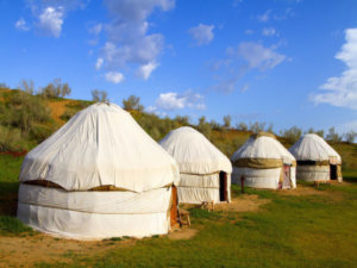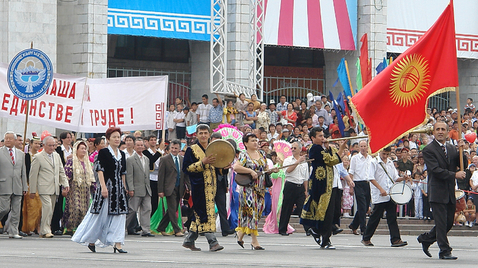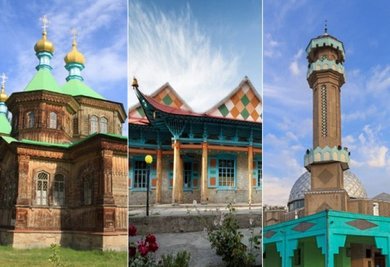- +996 777 210 317
- I'm-Nomad, Kygyzstan, г. Bishkek, Kaluk Akieva st.. 66
- info@im-nomad.com
Culture & Traditions
Culture & Traditions
Kyrgyz people still keep traditions used by nomads in the steppes of Central Asia from the ancient period. Because it is comfortable to move nomad people used yurts to live. If before people use yurts as a home despute of the seasons, now people use yurts only for pastures in summer. Nowadays yurt is getting popular to the treatment of the whole organism of heirs of nomads

HORSE & YURT
Yurts have been a distinctive feature of life in Central Asia for at least three thousand years. The first written description of a yurt used as a dwelling was recorded by Herodotus, the ‘father of history’, who lived in Greece between 484 and 424 BC. He described yurt-like tents as the dwelling place of the Scythians, a horse riding-nomadic nation who lived in the northern Black Sea and Central Asian region from around 600 BC to AD 300. ( © Wikipedia info )Horse Games: Equestrian games are played in Kyrgyzstan. Before, the life of Nomads was linked with the horse. Horses were the tools for everyday life and the maintenance of livestock. But also, the horses were the meaning of transport during removal and war. To train horses and riders equestrian games were appeared. This type of pleasure in nomad’s life develops endurance and agility for horses. Riders become stronger, braver and cleverer.

FOOD & BEVERAGES
Central Asian kitchen is similar to the Middle East. Because Kyrgyzstan was one of the main centers of Great Silk Road the food is intermixed with other nations, therefore now its versatile. But real nomads’ kitchen is mainly consisted of meat, dairy products and bread.The most popular food of Kyrgyz is : besh barmak (Made from meat, noodles. Eat with fingers), plov (carrots, rice, oil olive. Eat with shakarap), shorpo (soup), manty (flour, meat, onion, olive oil. Eat with spices). For delicates Kyrgyz people eat chuchuk (horse meat ), lagman (uighur food).Kyrgyz people drink Tea, served with milk. If you do not like strong liquor (usually vodka), you’d better apologize in advance. You will also, perhaps, regaled with kymyz, fermented by mare’s milk, and tasted slightly alcoholic, available only in spring and summer times, when the mares foal. In contrast, the bozo (thick and frothy alcohol-based fermented millet) is available throughout the all year around.

KYRGYZ HOLIDAYS & RED DAYS
This is the list of public holidays in Kyrgyzstan:
- 1 January – New Year’s Day
- 7 January – Orthodox Christmas
- 23 February – Fatherland Defender’s Day
- 8 March – Women’s Day21 March – Nooruz, Persian New Year – spring festival
- 24 March – Day of National Revolution
- 1 May – Labor Day
- 5 May – Constitution Day
- 8 May – Remembrance Day
- 9 May – Victory Day (end of World War II)
- 31 August – Independence Day
- 7 November – Day of the Great October Socialist Revolution Issyk Kul LakeTwo additional Muslim holidays Orozo Ait and Kurman Ait are defined by lunar calendar.

RELIGIONS
Islam is the dominant religion of Kyrgyzstan: 80% of the population is Muslim while 17% follow Russian Orthodoxy and 3% other religions. A 2009 Pew Research Center report indicates a higher percentage of Muslims, with 86.3% of Kyrgyzstan’s population adhering to Islam. The majority of Muslims are non-denominational Muslims at 64% while roughly 23% are Sunni, adhering to the Hanafi school of thought. There are a few Ahmadiyya Muslims, though unrecognised by the country.
The Constitution in Kyrgyzstan guarantees freedom of worship.Some Kyrgyz practice Tengriizm, the recognition of spiritual kinship with a particular type of animal and reverence for the Spirits of nature, ancestors, the earth and sky. Under this belief system, which predates their contact with Islam, Kyrgyz tribes traditionally adopted reindeer, camels, snakes, owls, and bears as objects of worship. The sky, earth, sun, moon, and stars also play an important religious role.